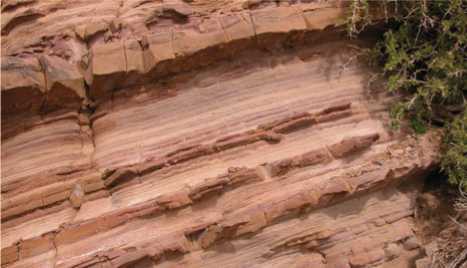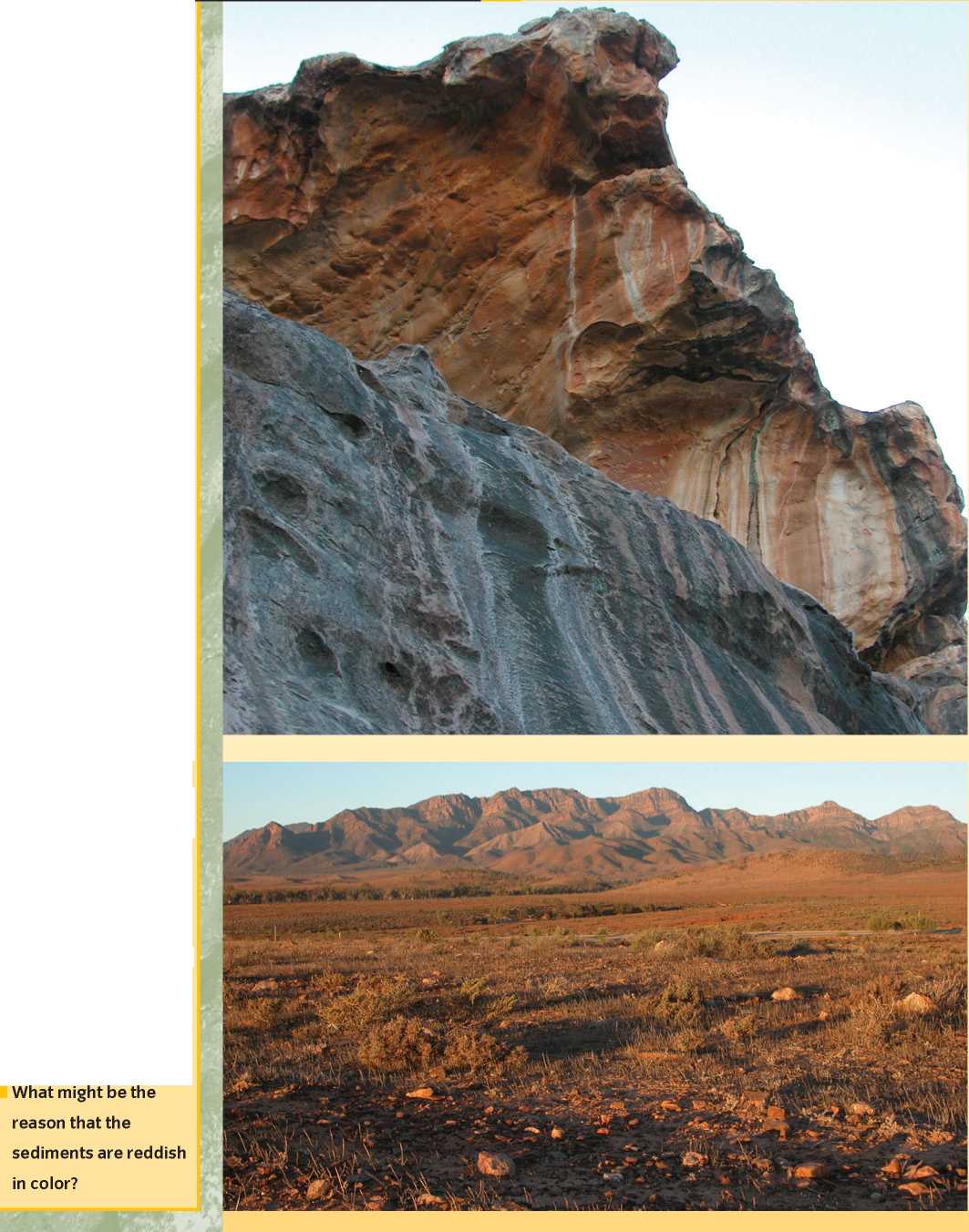1. Why are sedimentary rocks composed mostly of silicate and carbonate minerals? Of the silicates, why are quartz and clay minerals predominant? What happens to the feldspar and other silicate minerals?
2. Do the terms shale, siltstone, sandstone, and conglomerate represent a genetic or descriptive classification system of sedimentary rocks?
3. Large igneous intrusions commonly form kilometers below Earth's surface. How would the batholiths that comprise the Sierra Nevada range of the western United States have made their way to the surface? What happened to the overlying rock?
4. Organisms are major contributors to the sedimentary rock record. Why do you think this is so? What places on Earth would you expect their contribution to sediment to be most important?
5. How would you distinguish sedimentary bedding from metamorphic foliation?
6. How would you distinguish a nonfoliated metamorphic rock such as marble or quartzite from its sedimentary derivative (limestone or quartz sandstone)?
7. If you were seeking to find the oldest rocks on Earth, where would be your best opportunity for success: on a continent or in a deep ocean basin? What type(s) of rock would you want to search for to gather evidence of the earliest-formed rocks on Earth— igneous, sedimentary, or metamorphic?

What is happening in these pictures?
I Where have the removed rocks gone?

I Weathering, erosion, and sedimentation in a mountainous desert.
This photo shows a craggy rock surface overhanging a cave. Below, a polished rock surface shows a thin veneer of minerals that have left vertical streaks.
I What weathering and erosional processes led to removal and polishing of the rock?
I What is the source of the ions needed to reprecipitate the minerals forming the vertical streaks on the polished rock face?
I This photo shows sediment stretching out across a plain in front of a mountain range.
I What was the likely source of sediment deposited on the plain?
I What processes created this sediment surface?




 World History
World History









